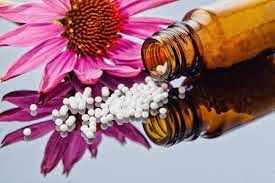Below are some of the most common and effective remedies for various muscle aches, pains, bruising and injuries from sports, physical exercise and/or exertion:
Arnica montana
Arnica is the sine qua non for all forms of trauma, including soft tissue injuries, falls, blows, bruises, contusions, sprains, strains, broken bones, overexertion, mental stress, shock, and PTSD. Arnica is an essential addition to any sports first aid kit. Arnica can be helpful at the time of acute injury or even years later for injuries that have failed to completely heal.
Arnica is the sine qua non for all forms of trauma, including soft tissue injuries, falls, blows, bruises, contusions, sprains, strains, broken bones, overexertion, mental stress, shock, and PTSD. Arnica is an essential addition to any sports first aid kit. Arnica can be helpful at the time of acute injury or even years later for injuries that have failed to completely heal.
Hypericum perforatum
Hypericum is one of the best medicines for injured nerves, especially in sensitive areas like the fingers, toes, and under the nails. It is useful in crush injuries, painful lacerations, and when intolerable, violent, shooting, and sharp pains are present. It is helpful in cases of brain and spinal cord injury. Hypericum can be used when wounds feel more tender than they look. It can also be helpful post-operatively for nerve injuries or after tooth extractions.
Hypericum is one of the best medicines for injured nerves, especially in sensitive areas like the fingers, toes, and under the nails. It is useful in crush injuries, painful lacerations, and when intolerable, violent, shooting, and sharp pains are present. It is helpful in cases of brain and spinal cord injury. Hypericum can be used when wounds feel more tender than they look. It can also be helpful post-operatively for nerve injuries or after tooth extractions.
Rhus toxicodendron
Rhus tox is helpful in cases where there is pain and stiffness of muscles and joints known as the “rusty gate” phenomenon. Helpful in strains and sprains caused by over-lifting or overexertion.
Rhus tox is helpful in cases where there is pain and stiffness of muscles and joints known as the “rusty gate” phenomenon. Helpful in strains and sprains caused by over-lifting or overexertion.
Ruta graveolens
Ruta is highly effective in cases of injured or bruised bones, joints, and tendons that present sore, aching pains and restlessness. Ruta has special affinity for the flexor tendons of the ankles and wrists. It is helpful in cartilage injuries and bruises of the periosteum. Helpful in sciatic pain that is worse when lying down at night and for persistent lameness and weakness after sprains or strains.
Ruta is highly effective in cases of injured or bruised bones, joints, and tendons that present sore, aching pains and restlessness. Ruta has special affinity for the flexor tendons of the ankles and wrists. It is helpful in cartilage injuries and bruises of the periosteum. Helpful in sciatic pain that is worse when lying down at night and for persistent lameness and weakness after sprains or strains.
Symphytum
Symphytum is particularly helpful in injuries to bones, cartilages, and periosteum when there is excessive pain. It is good for old painful injuries that have failed to heal properly. Useful in fractures and broken bones where there is a pricking or stitching sensation that remains after the wound is healed. Symphytum is known for its ability to help heal nonunion of fractures.
Symphytum is particularly helpful in injuries to bones, cartilages, and periosteum when there is excessive pain. It is good for old painful injuries that have failed to heal properly. Useful in fractures and broken bones where there is a pricking or stitching sensation that remains after the wound is healed. Symphytum is known for its ability to help heal nonunion of fractures.
=



